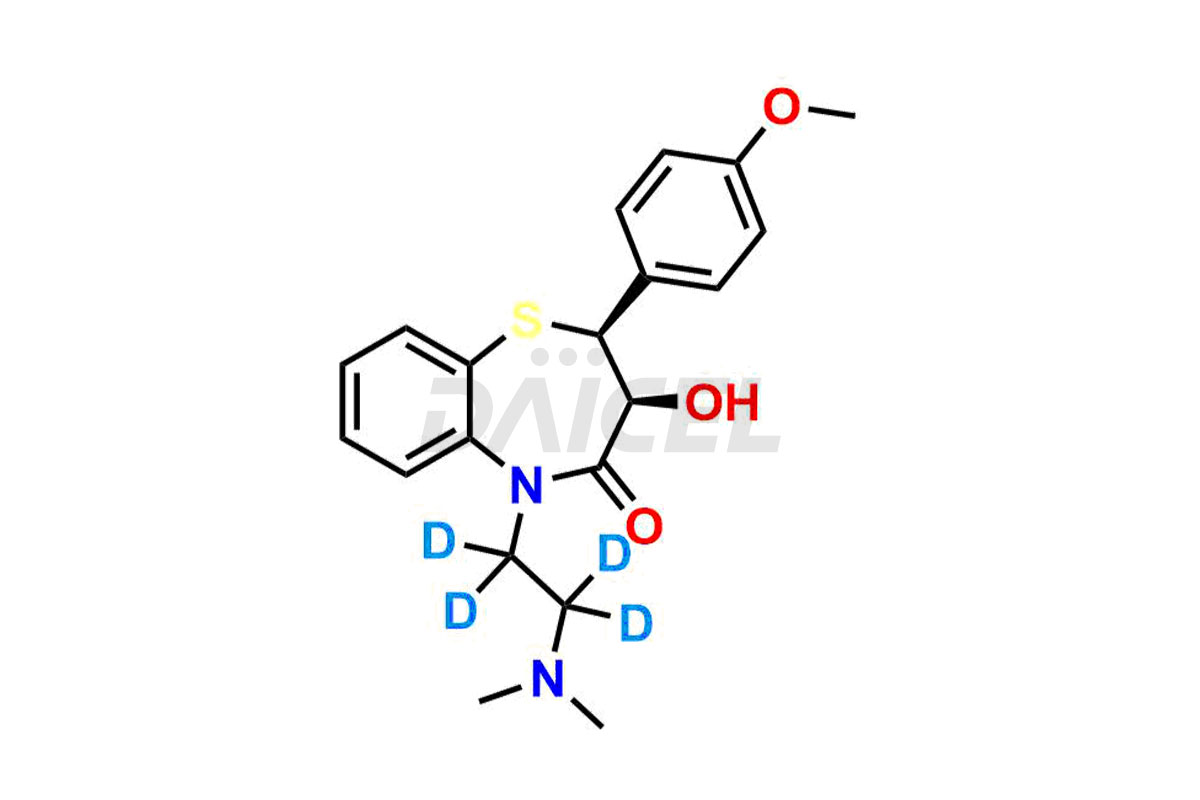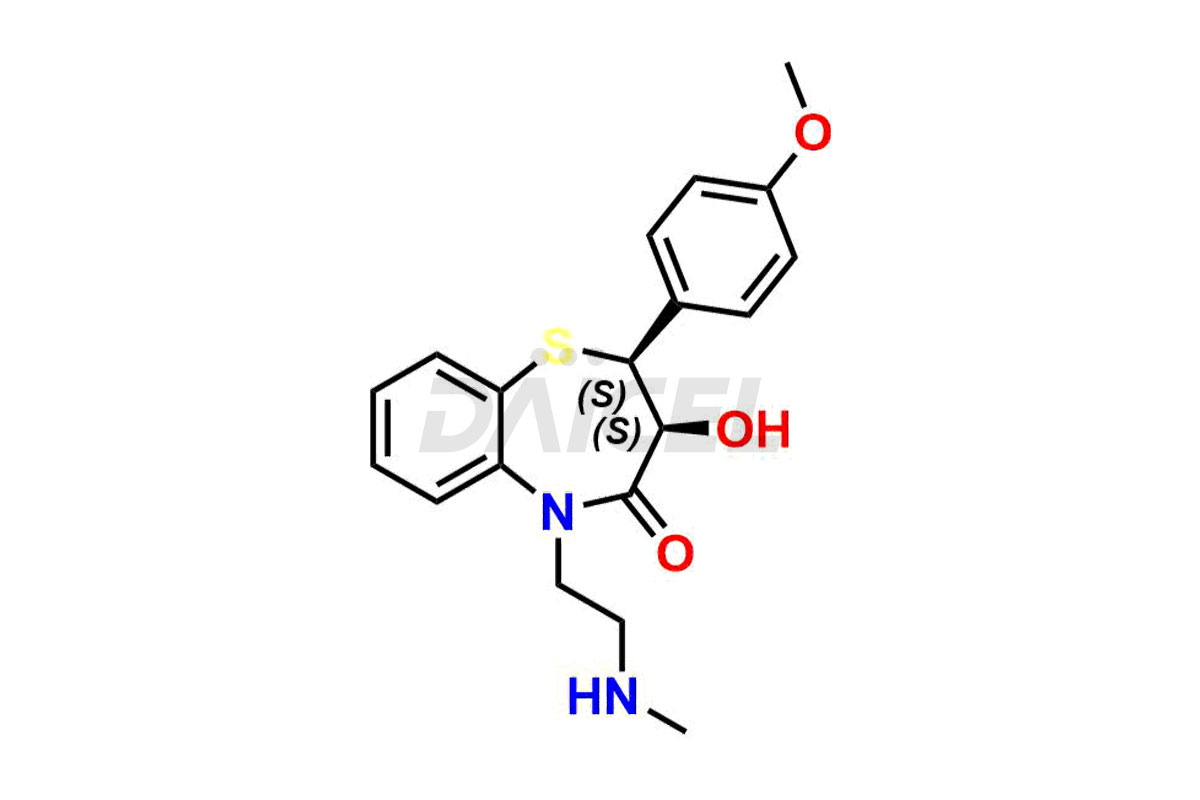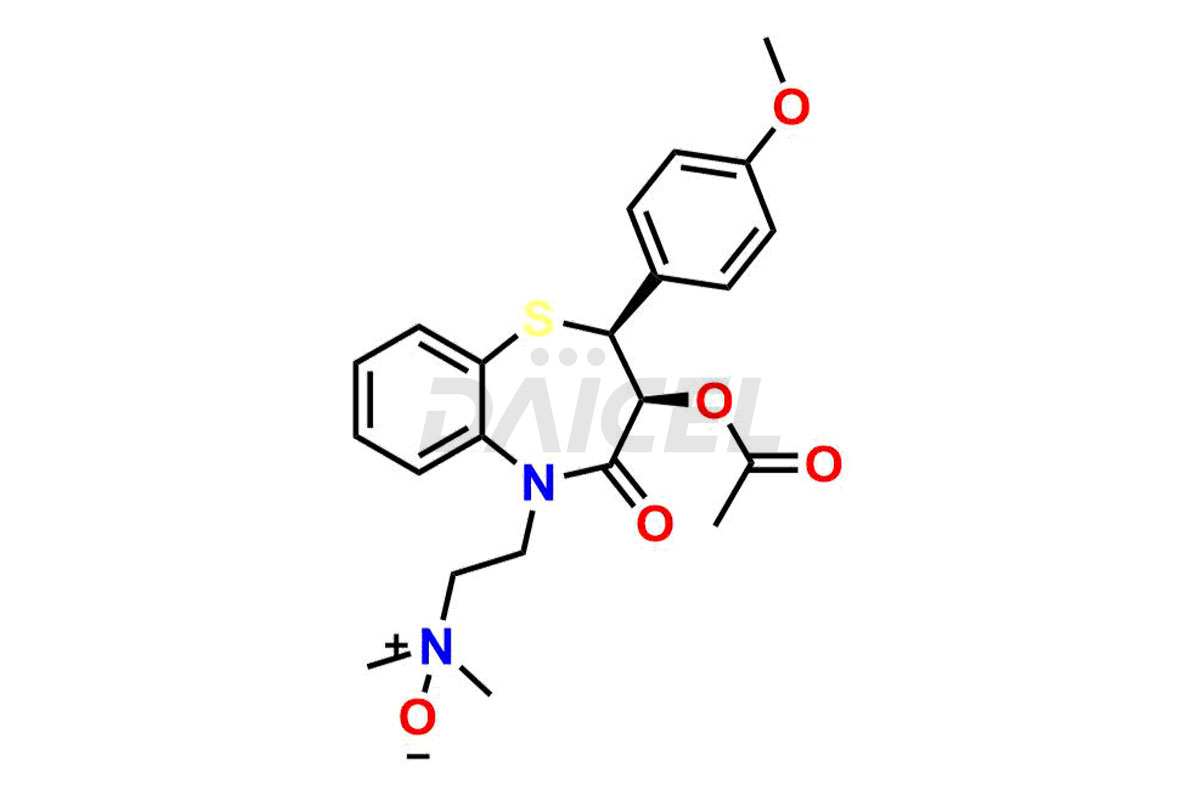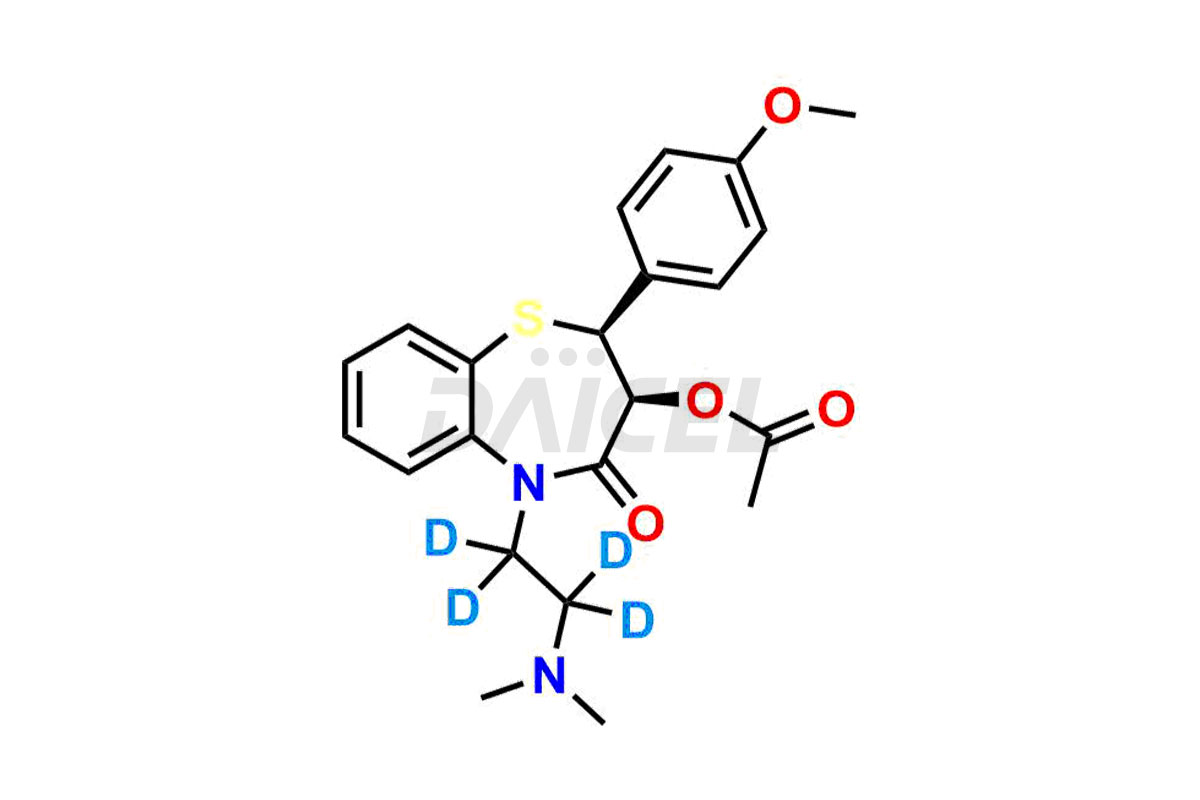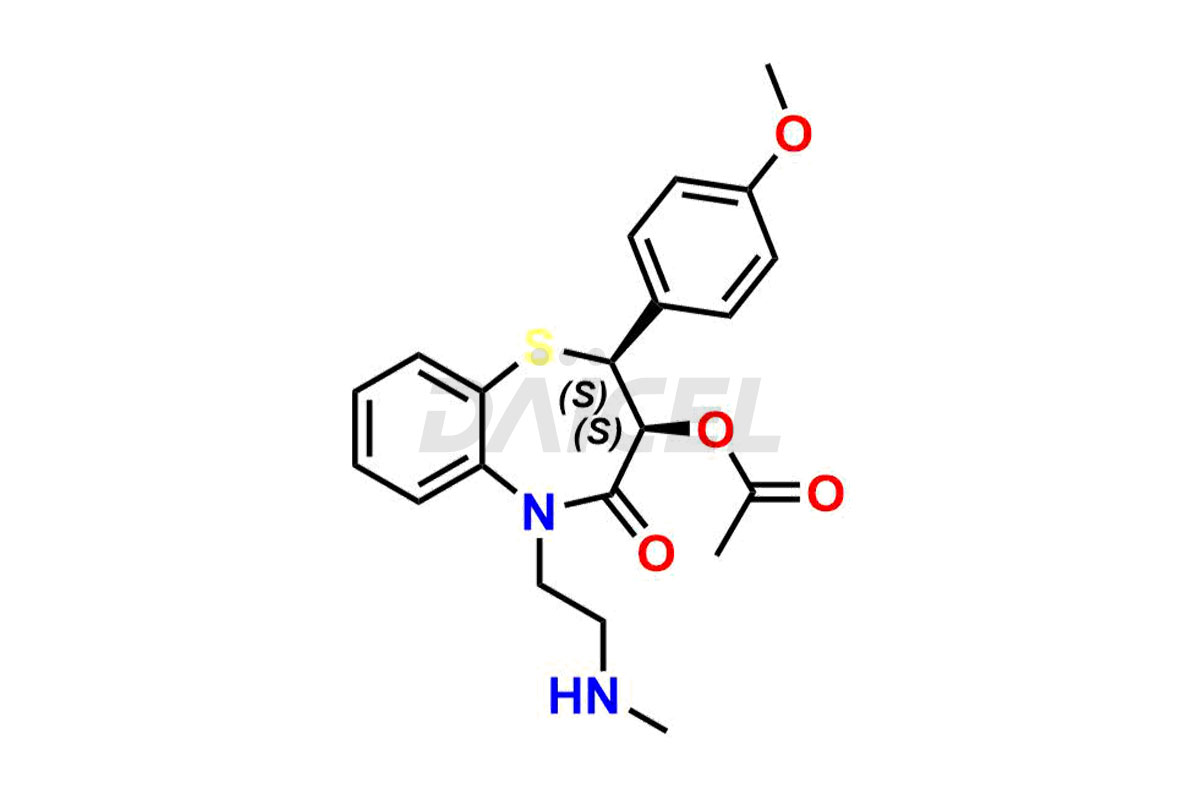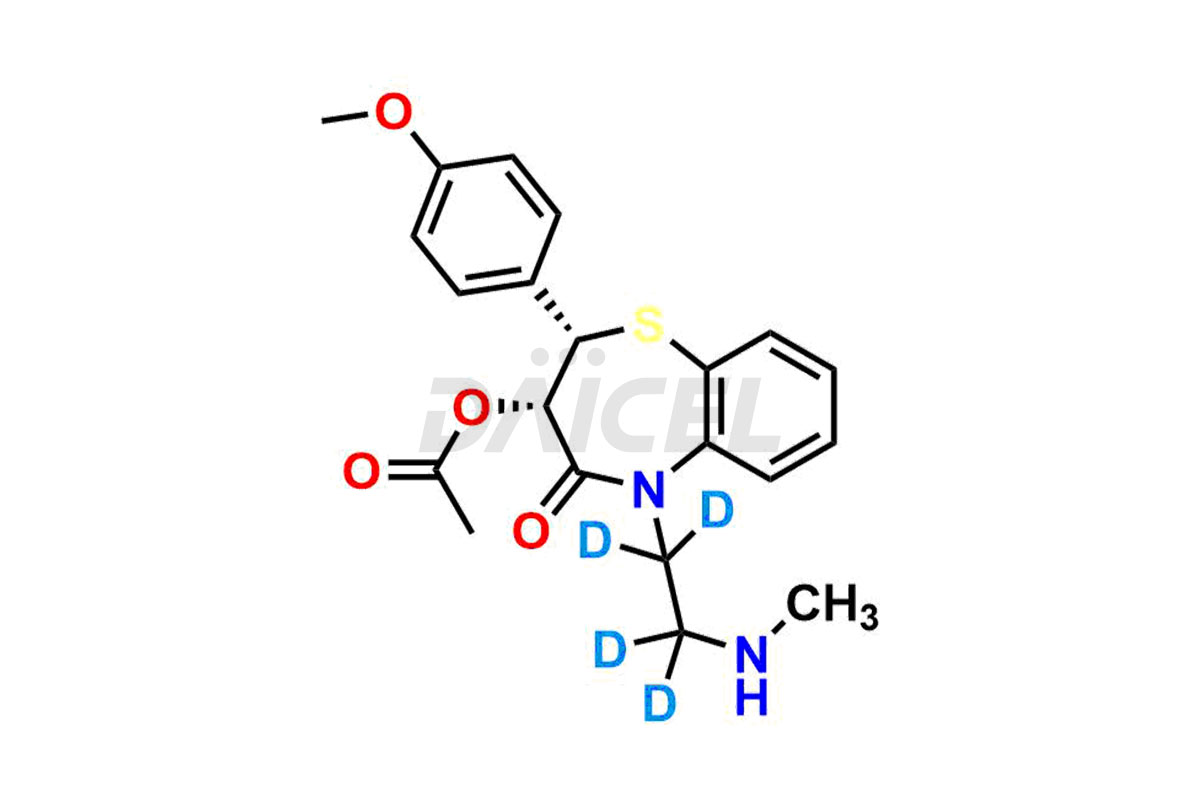Diltiazem
General Information
Diltiazem Impurities and Diltiazem
Daicel Pharma specializes in offering high-quality impurities for Diltiazem, a crucial active pharmaceutical ingredient. These impurities, including Des Acetyl Di des Amino Methyl Diltiazem, Des Acetyl Diltiazem, Diltiazem EP Impurity G, Diltiazem N-Oxide, Diltiazem Sulphoxide, and N-Des methyl Diltiazem, play a vital role in assessing the purity, reliability, and safety of Diltiazem. Daicel Pharma also offers a customized synthesis of Diltiazem impurities to cater to clients’ requirements, with worldwide delivery options available.
Diltiazem [CAS: 42399-41-7], a first-generation calcium channel blocker, is a benzothiazepine derivative that treats hypertension and angina pectoris. It blocks the effects of calcium channels in blood vessels and exhibits anti-hypertensive and anti-arrhythmic properties.
Diltiazem: Use and Commercial Availability
Diltiazem is a non-dihydropyridine calcium channel blocker. It is available in oral and parenteral dosage forms. It has anti-arrhythmic, anti-hypertensive, and anti-anginal properties. Diltiazem treats hypertension, atrial arrhythmia, chronic stable angina, and paroxysmal supraventricular tachycardia. It possesses vasodilating properties, further contributing to its therapeutic effects. Some of the brand names include Cardizem, Cartia XT, Dilacor XR, Dilt-CD, Diltzac, Taztia XT, Tiamate, And Tiazac.
Diltiazem Structure and Mechanism of Action 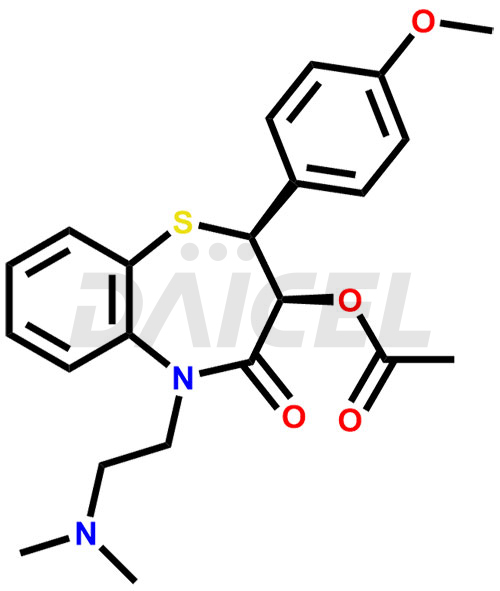
The chemical name of Diltiazem is (2S,3S)-3-(Acetyloxy)-5-[2-(dimethylamino)ethyl]-2,3-dihydro-2-(4-methoxyphenyl)-1,5-benzothiazepin-4(5H)-one. Its chemical formula is C22H26N2O4S, and its molecular weight is approximately 414.5 g/mol.
Diltiazem relaxes vascular smooth muscle and decreases peripheral vascular resistance causing the reduction of blood pressure. In addition, it is a dilator of coronary arteries, epicardial and subendocardial.
Diltiazem Impurities and Synthesis
Diltiazem impurities refer to unwanted substances that are present in Diltiazem formulations. They form during the synthetic1 or manufacturing process or may be degradation products that develop over time. It is necessary to analyze and control these impurities to ensure Diltiazem safety, efficacy, and quality. Impurity analysis helps identify and quantify impurities understand their potential impact on a patient’s health, and establish appropriate specifications and limits for their presence. Their strict control is crucial to comply with regulatory requirements, maintain product stability, and minimize potential harmful effects of impurity-related issues in Diltiazem.
Daicel Pharma offers a comprehensive Certificate of Analysis (CoA) for Diltiazem impurity standards, including Des Acetyl Di des Amino Methyl Diltiazem, Des Acetyl Diltiazem, Diltiazem EP Impurity G, Diltiazem N-Oxide, Diltiazem Sulphoxide, and N-Des methyl Diltiazem. These impurities generate from an analytical facility that complies with cGMP standards. The CoA provides a detailed characterization report with data obtained through techniques such as 1H NMR, 13C NMR, IR, MASS, and HPLC purity analysis2. We give additional data like 13C-DEPT upon request. Daicel Pharma synthesizes unknown Diltiazem impurities or degradation products, and labeled compounds, to evaluate the efficacy of generic Diltiazem. Also, Des Acetyl Diltiazem-D4, N-Des methyl Diltiazem-D4, and Diltiazem-D4, deuterium-labeled Diltiazem compounds, available for bio-analytical research, including BA/BE studies. Every delivery accompanies a complete characterization report.
References
FAQ's
References
- Igarashi, Kikuo; Honma, Tsunetoshi, Process for production of Diltiazem hydrochloride, Shionogi and Co., Ltd., Japan, US4552695A, November 12, 1985
- Shimizu, Reiji; Ishii, Kazuhiro; Tsumagari, Nobuchika; Tanigawa, Masatoshi; Matsumoto, Mikio; Harrison, Ian T., Determination of optical isomers in diltiazem hydrochloride by high-performance liquid chromatography, Journal of Chromatography, Volume: 253, Issue: 1, Pages: 101-8, 1982
Frequently Asked Questions
How is the control of Diltiazem impurities ensured during the production process?
Stringent quality control measures, including regular testing and monitoring, are implemented to ensure the control of impurities during production.
Can impurity profiles in Diltiazem differ among different manufacturers?
Yes, impurity profiles may vary among different manufacturers due to differences in synthetic processes, raw materials, and manufacturing controls.
Which solvent helps in the analysis of Diltiazem impurities?
Methanol or Chloroform are the solvents used in analyzing many impurities in Diltiazem.
What are the temperature conditions required to store Diltiazem impurities?
Diltiazem impurities are stored at a controlled room temperature between 2-8 °C or as indicated on the Certificate of Analysis (CoA).
Note: Products protected by valid patents by a manufacturer are not offered for sale in countries having patent protection. The sale of such products constitutes a patent infringement, and its liability is at the buyer's risk.



